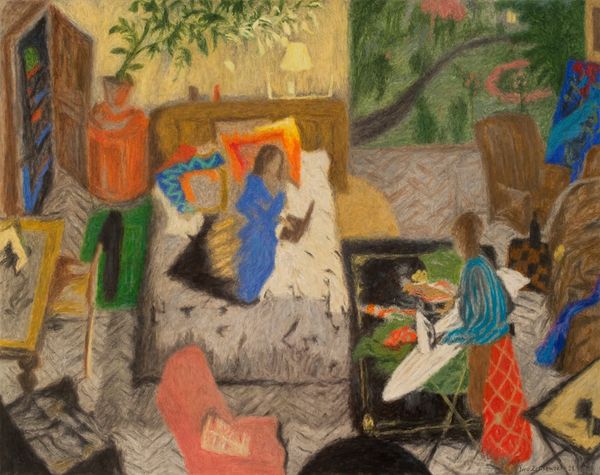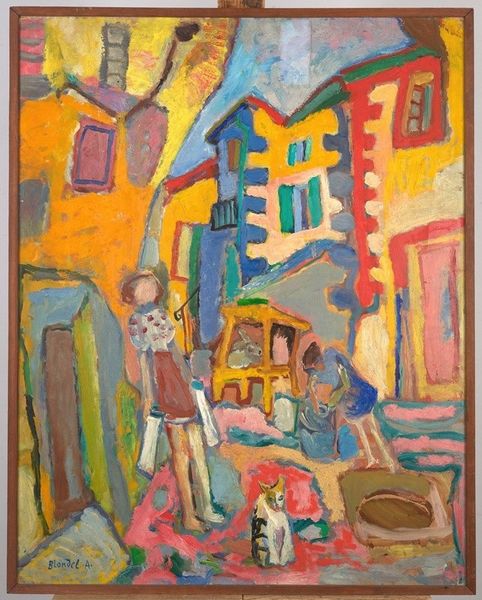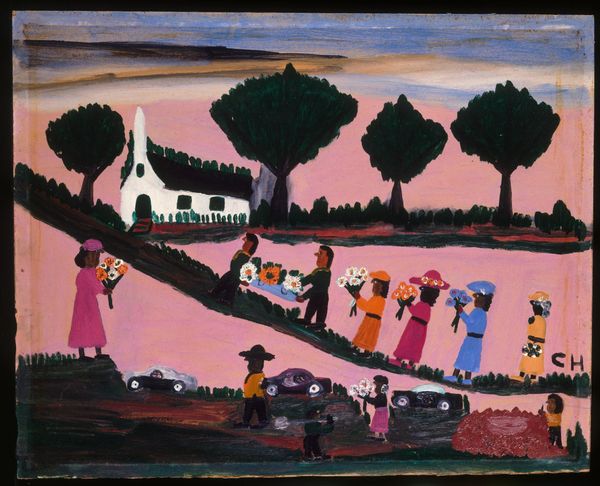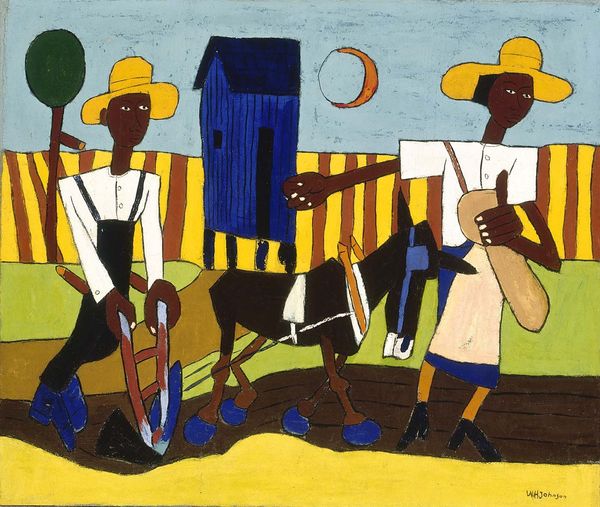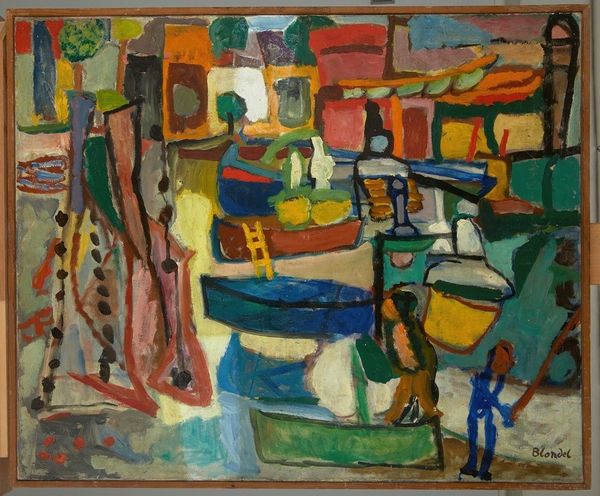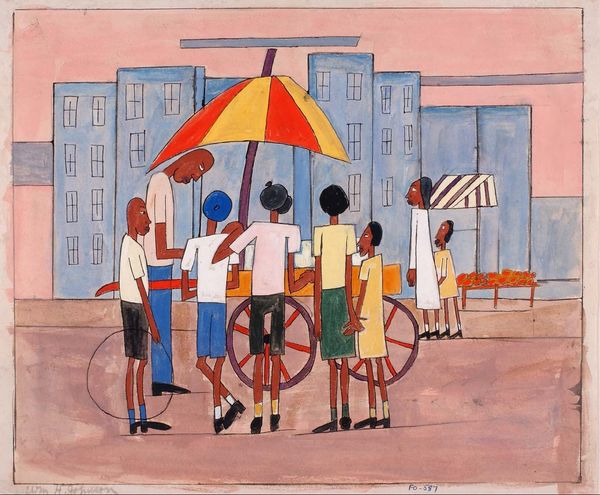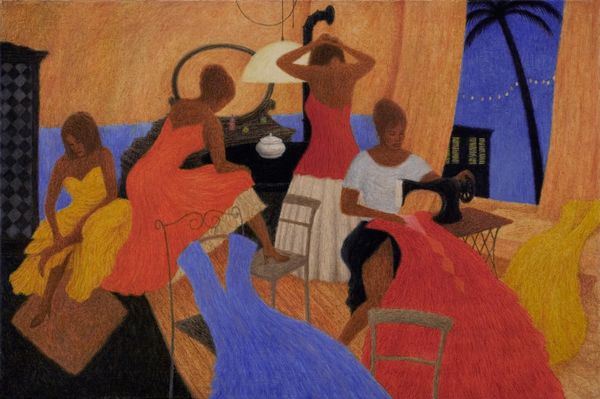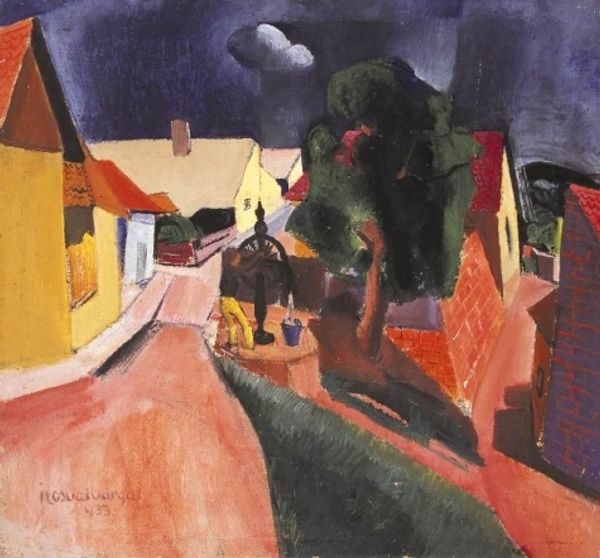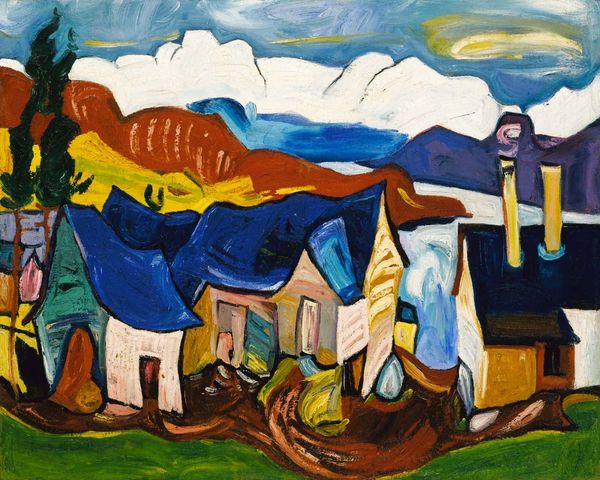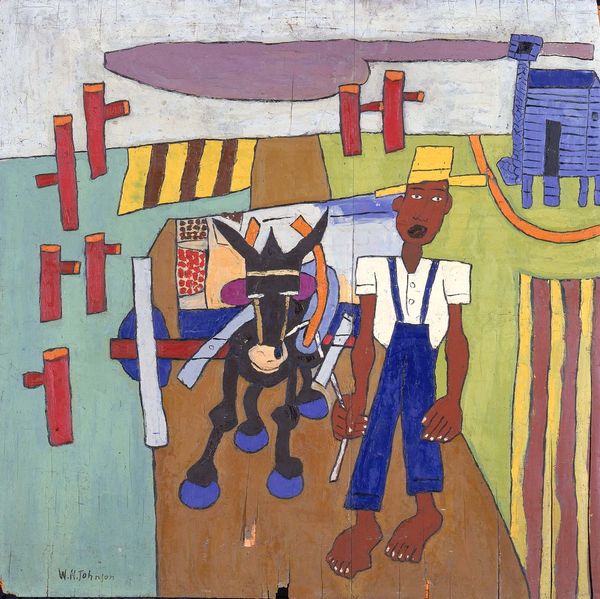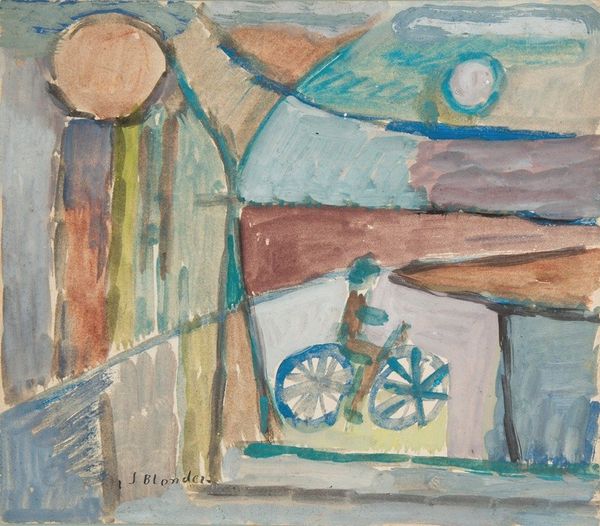
Copyright: William H. Johnson,Fair Use
Editor: William H. Johnson's "Breakdown," created in 1941, feels… well, a bit chaotic! There's a strange energy with these somewhat cartoonish figures. The flattened perspective and bold colors add to that intensity. How do you interpret this work? Curator: The symbolism here resonates deeply. Consider the exposed feet beneath the broken-down vehicle. Bare feet often represent vulnerability or being grounded to the earth. Are they trapped? Or is this a deliberate act? Then look at the figure painting a fence, seemingly disconnected. Editor: They seem to be working even as the vehicle they may be reliant on falls apart. Curator: Exactly! Notice too the setting sun. Symbolically, what might a setting sun represent in conjunction with this breakdown and persevering work? Is it the end of an era, a difficult moment, or simply the close of day, the perseverance an act of hope, faith or necessity? This scene holds both a specific story and a larger, perhaps universal, human experience. Johnson offers us entry points to decipher cultural memory, prompting a complex range of interpretations. Editor: It's like he’s using a visual shorthand to express something about resilience in the face of adversity. So it's more than just a breakdown on the road. Curator: Precisely. The figures, rendered in a style evocative of African art, root this scene within a specific cultural context. But it begs further thought. How might lived experience inform his use of archetypal symbols? Editor: This really sheds light on how Johnson infuses everyday scenes with a rich layer of symbolic meaning, and asks the viewer to dig deeper and actively make connections to its universal and cultural subtexts. Curator: Indeed. He's challenging us to look beyond the surface, to find meaning within the breakdown.
Comments
No comments
Be the first to comment and join the conversation on the ultimate creative platform.

